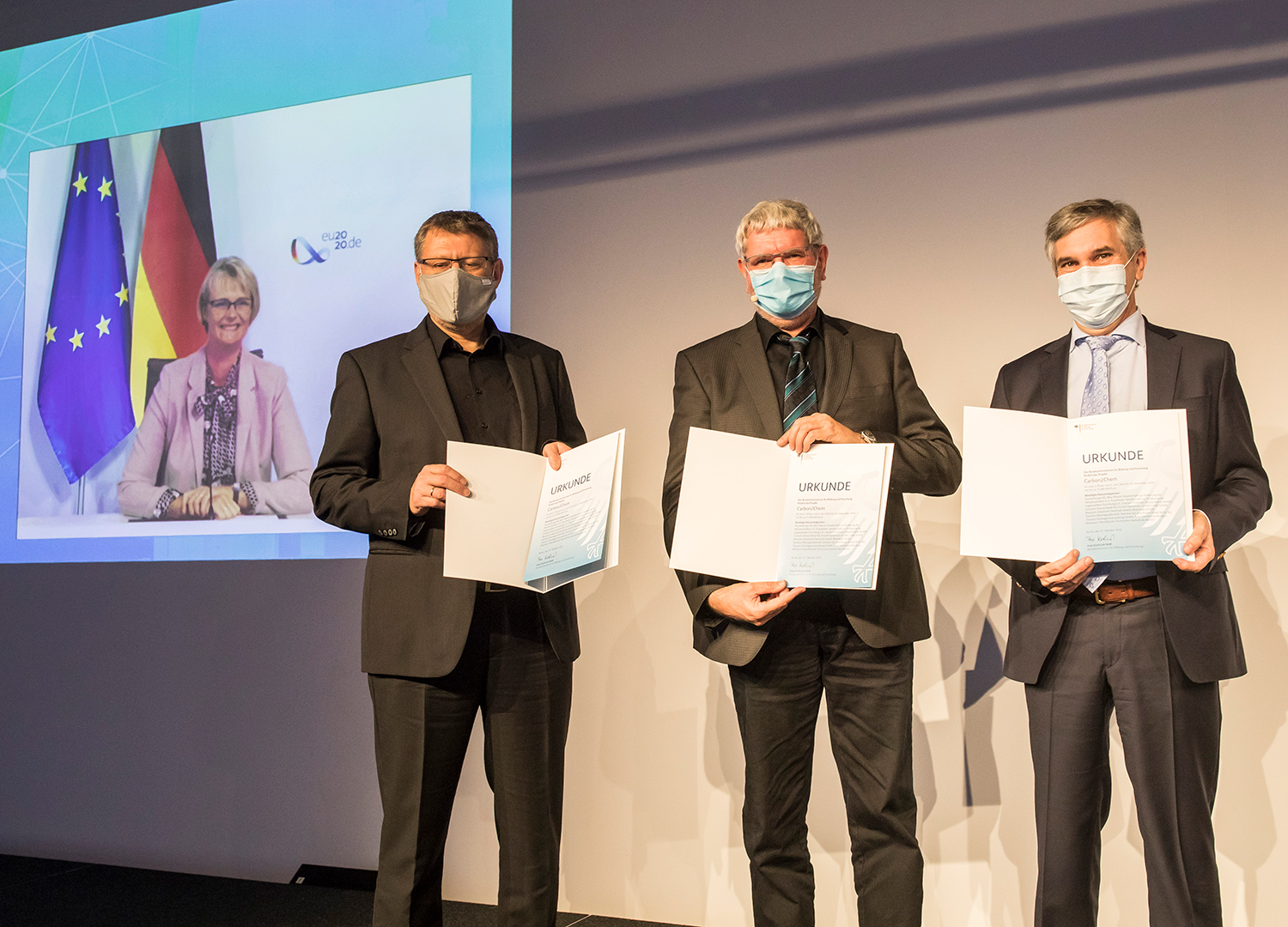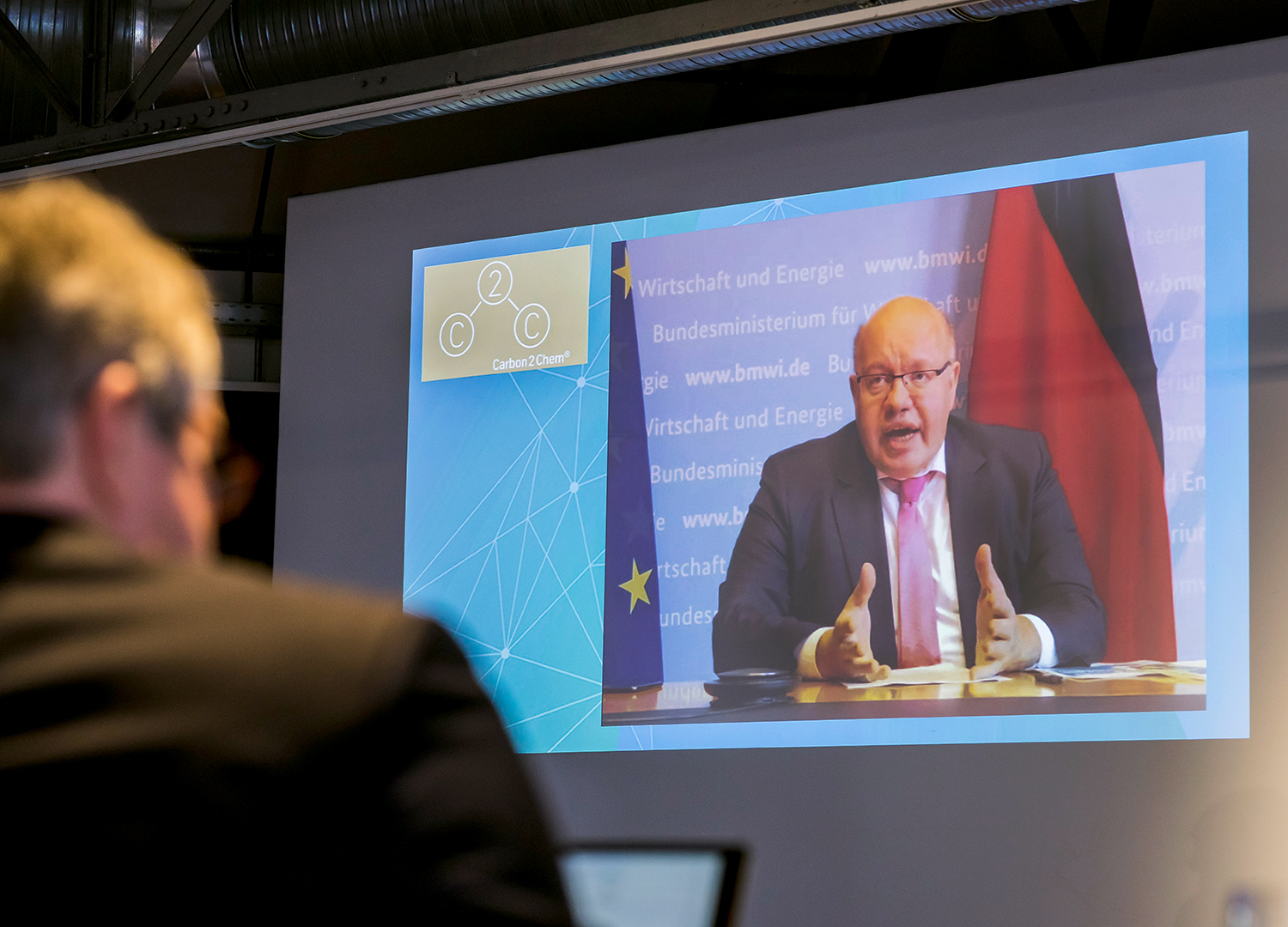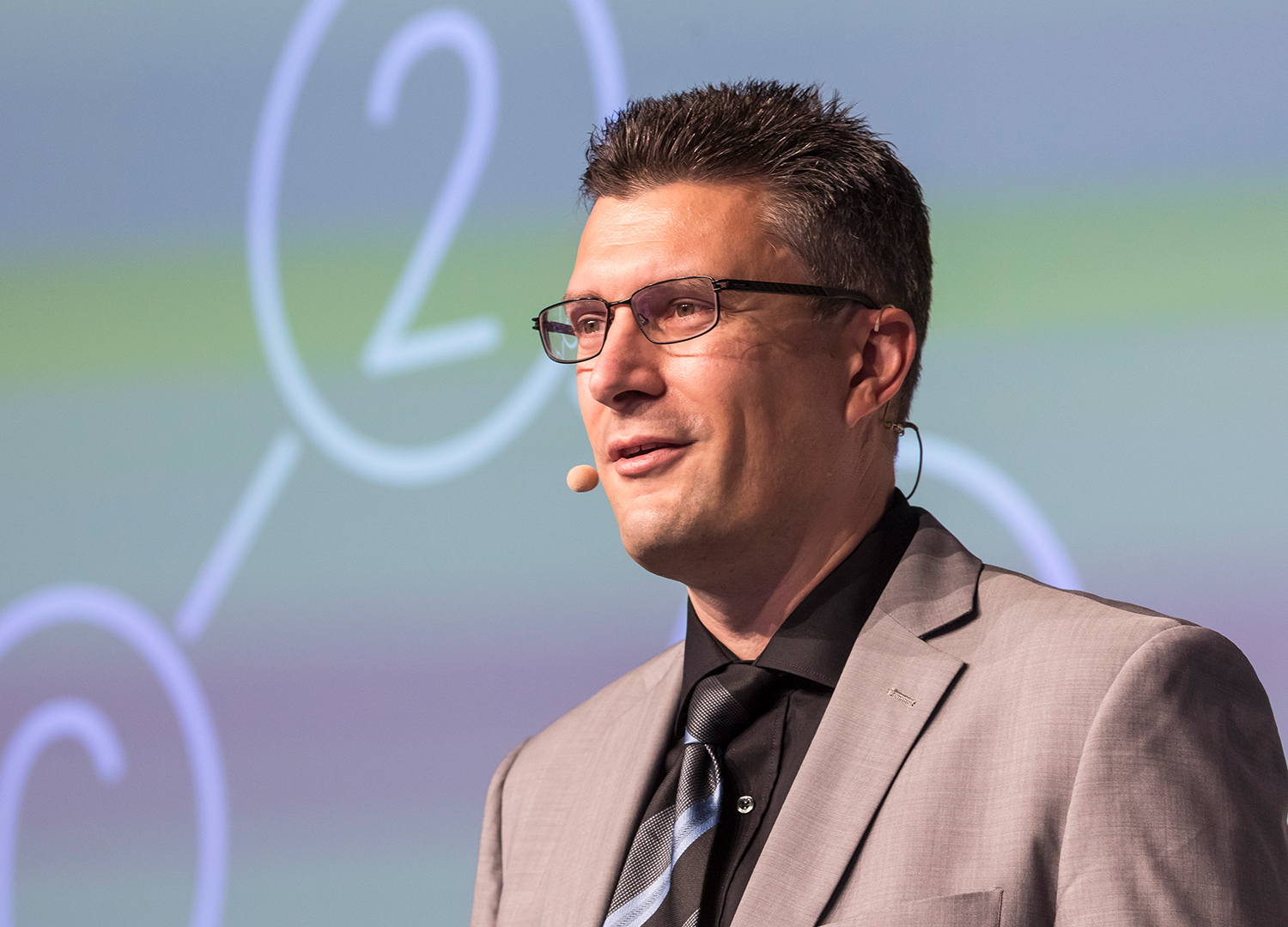Carbon2Chem® Conference
Politicians, business and science discussed options and framework conditions for climate-friendly steel production
The chances of reducing industrial CO2 emissions by 2030 are good. The technical prerequisites have been created thanks to projects such as Carbon2Chem®. Now it is important to set up the corresponding framework conditions in the form of regulations, renewable energies and green hydrogen. This is the quintessence of the 3rd Conference on Sustainable Chemical Conversion on October 27 and 28, 2020.



The event brought together representatives from politics, business and science to discuss the requirements and options for a climate-friendly industry. Occasion: The first phase of the joint project Carbon2Chem® funded by the German Federal Ministry of Education and Research (BMBF) was successfully completed. Coordinated by the Max Planck Institute for Chemical Energy Conversion, the Fraunhofer Institute for Environmental, Safety, and Energy Technology UMSICHT and thyssenkrupp Carbon2Chem GmbH, over the past four years process concepts have been developed which allow CO2-containing waste gases from Germany's biggest steel mill in Duisburg to be captured, cleaned and converted into basic materials for chemicals, fuels or fertilizers using "green" hydrogen.
Voices from politics
The conference focused on the classification of these results and the political course for their implementation. In her welcoming address, Federal Research Minister Anja Karliczek emphasized: "With the Green Deal we want to make Europe the first climate-neutral continent. This is no less than a fifth industrial revolution. Carbon2Chem® is a showcase example of how we can make the Green Deal a reality – and why we should definitely do so. Because the innovations from Carbon2Chem® not only protect the climate – they also strengthen our long-term competitiveness and secure high-quality jobs in the industry."
Peter Altmaier, another member of the German government, took also part in the event. Already in advance he emphasized the importance of such innovative projects for the future: "Carbon2Chem® is an example of the innovative character of Germany as a research location. We need such research projects in order to jointly drive forward the necessary decarbonization of our economy. And we need very concrete cooperation between industry and research, because only with innovations will we be able to master this transformation."
Results of the first project phase: water electrolysis, gas purification & Co.
Afterwards, representatives of the nearly 20 companies and research institutes involved in Carbon2Chem® presented the results of the first project phase in detail. It could be shown that the concepts of Carbon2Chem® are particularly characterized by their systemic approach and thus represent a cross-sector solution. Due to the modular structure of the process concepts, a link to other industrial CO2 sources and CO2 reduction technologies is possible. Due to the availability of the technologies and the modularity of the concepts, Carbon2Chem® can promptly support the individual steps of the transformation of the industry towards greenhouse gas neutrality.
In the individual subprojects, the necessary modules were developed and tested. For example, it could be shown that the hydrogen recovered from steel mill exhaust gases can be used directly for chemical-catalytic processes after purification. A further finding: Alkaline electrolysis can also be operated dynamically – without aging effects or efficiency losses. In this context, dynamic operation means that the plant is controlled according to the supply of renewable electricity.
New strategies were developed and optimized in the central component of gas processing. A corresponding plant was built and successfully operated in the pilot plant station. It relies on pressure swing adsorption, gas scrubbing and compression. In addition, work was carried out on processes for thermocatalytic and plasma catalytic oxygen removal (DeOxo process).
These are examples of essential findings that were gained thanks to the joint work in the project's own laboratory and pilot plant station. Target products such as methanol and urea could be produced based on the findings not only from pure gases but also from real gases from the smelter in Duisburg during the project term. A comprehensive simulation platform for the further development and optimization of concepts and processes of the overall system was established.
Outlook: Validating concepts for large-scale implementation
The Carbon2Chem® partners were convinced that it will in all probability be possible to produce methanol, urea, higher alcohols and polymers using carbon dioxide-containing process gases within this decade – on an industrial scale. Prof. Dr.-Ing. Görge Deerberg, said that this is now being worked towards in the second project phase. "Over the next four years, we want to show that the processes developed also function stably on a large scale and lay the foundation for low-emission steel production. To this end, the BMBF is providing a further 75 million euros up to 2024," explained the project coordinator and deputy director of Fraunhofer UMSICHT at the end of the conference.
Last modified:
 Fraunhofer Institute for Environmental, Safety and Energy Technology UMSICHT
Fraunhofer Institute for Environmental, Safety and Energy Technology UMSICHT